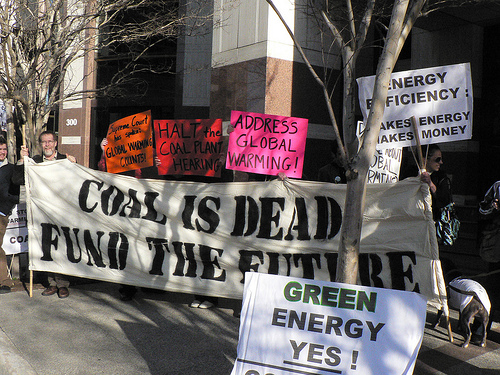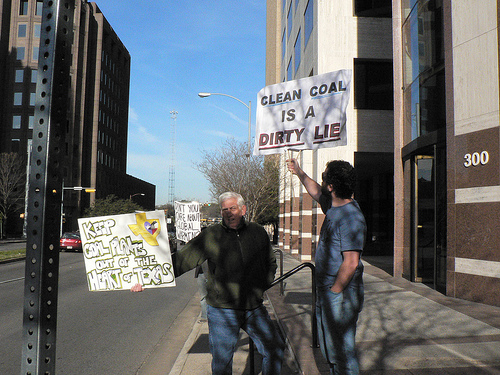
MOST EXCELLENT news from Dina Cappiello at the Associated Press:
WASHINGTON – The Environmental Protection Agency put hundreds of mountaintop coal-mining permits on hold Tuesday, saying it wants to evaluate the projects’ impact on streams and wetlands.
The decision by EPA administrator Lisa Jackson targets a controversial practice that allows coal mining companies to dump waste from mountaintop mining into streams and wetlands.
It could delay 150-200 surface coal mines, including mountaintop removal operations, according to the EPA.
Those permits are issued by the Army Corps of Engineers, an agency that has been criticized by environmental groups and has been sued for failing to thoroughly evaluate the environmental impact of mountaintop removal.
Under the Clean Water Act, companies cannot discharge rock, dirt and other debris into streams unless they can show that it will not cause permanent damage to waterways or the fish and other wildlife that live in them.
Last month, a three-judge appeals panel in Richmond, Va., overturned a lower court’s ruling that would have required the Corps to conduct more extensive reviews. The appeals court decision cleared the way for a backlog of permits that had been delayed until the lawsuit was resolved.
The EPA’s action on Tuesday leaves those permit requests in limbo a little longer.
The EPA said in a statement that it would be actively involved in the review of the long list of permits awaiting approval by the Corps, a signal that the agency under the Obama administration will exercise its oversight. The EPA has the authority to review and veto any permit issued by the Corps under the Clean Water Act, but under the Bush administration it did that rarely, environmentalists say.
The freeze only appears to apply to permits for new mines, and not those already in operation, but just the same — this is truly fantastic news for opponents of coal, the communities living near these mountains, and the environment in general. Happy Day! Purple Mountains Majesty! Yonder Mountain String Band! Rocky Mountain High! My Home is in the Blue Ridge Mountains!

 Researchers have drawn direct and immediate links between ambient levels of fine particulates and hospital admissions and deaths. By some estimates, tens of thousands of Americans die each year from exposure to airborne particulates.
Researchers have drawn direct and immediate links between ambient levels of fine particulates and hospital admissions and deaths. By some estimates, tens of thousands of Americans die each year from exposure to airborne particulates. Last Friday two administrative law judges refused to hear testimony on the impact of carbon dioxide emissions during the permitting process for the NRG Limestone coal-fired power plant. The contested case hearing for NRG’s air quality permit application will be going on all week long, but testimony on the proposed plant’s contribution to global warming will not be allowed. The judges decided that the TCEQ has adopted clear policies that they would not consider testimony on the issue, even though the Supreme Court ruled in 2007 (
Last Friday two administrative law judges refused to hear testimony on the impact of carbon dioxide emissions during the permitting process for the NRG Limestone coal-fired power plant. The contested case hearing for NRG’s air quality permit application will be going on all week long, but testimony on the proposed plant’s contribution to global warming will not be allowed. The judges decided that the TCEQ has adopted clear policies that they would not consider testimony on the issue, even though the Supreme Court ruled in 2007 ( In protest, local environmentalists gathered for an 8:30 a.m. protest Monday Feb 22 outside the State Office of Administrative Hearings. Groups supporting the protest included: Public Citizen, SEED Coalition, Environment Texas, Clean Water Action, Re- Energize Texas, and the Texas Climate Emergency Campaign.
In protest, local environmentalists gathered for an 8:30 a.m. protest Monday Feb 22 outside the State Office of Administrative Hearings. Groups supporting the protest included: Public Citizen, SEED Coalition, Environment Texas, Clean Water Action, Re- Energize Texas, and the Texas Climate Emergency Campaign.
 The
The  Remember last week, when I was
Remember last week, when I was 

